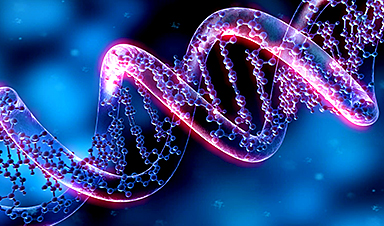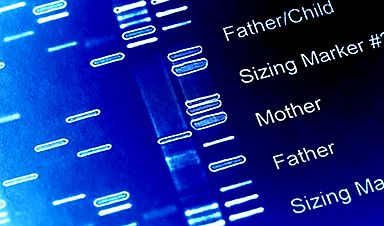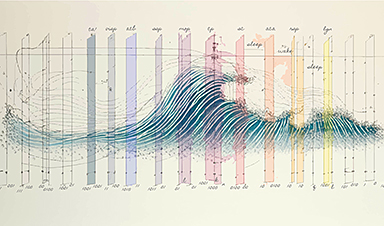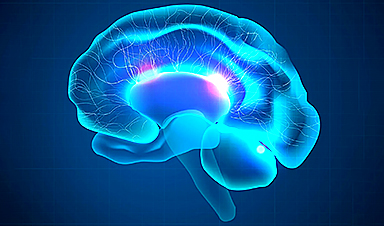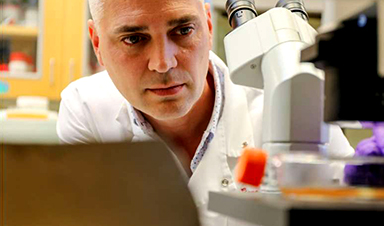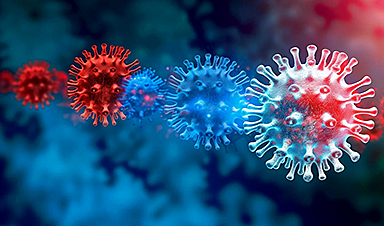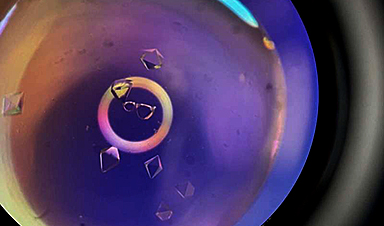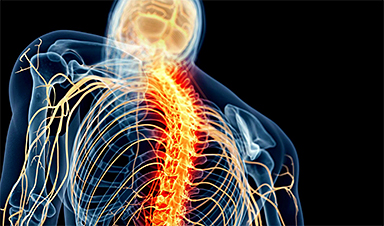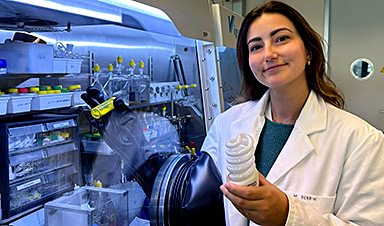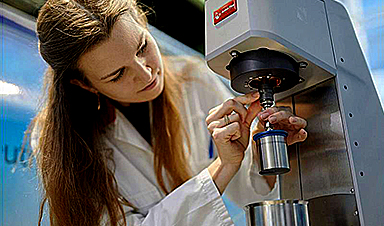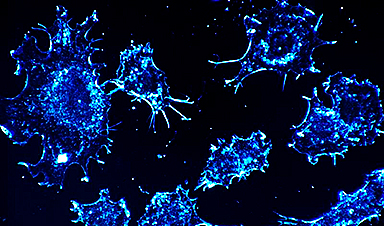Scientists from ETH Zurich and the University of Geneva have developed a new technique that allows them to observe chemical reactions taking place in liquids at extremely high temporal resolution. This innovation enables them to track how molecules change within in mere femtoseconds – in other words, within a few quadrillionths of a second.
This breakthrough builds upon prior research by the same team, led by Hans Jakob Wörner, Professor of Physical Chemistry at ETH Zurich. That work yielded similar results for reactions that take place in gas environments.
To expand their X-ray spectroscopy observations to liquids, the researchers had to design an apparatus capable of producing a liquid jet with a diameter of less than one micrometer in a vacuum. This was essential because if the jet were any wider, it would absorb some of the X-rays used to measure it.
Molecular pioneer in biochemistry
Using the new method, the researchers were able to gain insights into the processes that led to the emergence of life on Earth. Many scientists assume that urea played a pivotal role here. It is one of the simplest molecules containing both carbon and nitrogen.
What’s more, it’s highly likely that urea was present even when the Earth was very young, something that was also suggested by a famous experiment done in the 1950s: American scientist Stanley Miller concocted a mixture of those gases believed to have made up the planet’s primordial atmosphere and exposed it to the conditions of a thunderstorm. This produced a series of molecules, one of which was urea.
According to current theories, the urea could have become enriched in warm puddles – commonly called primordial soup – on the then lifeless Earth. As the water in this soup evaporated, the concentration of urea increased. Through exposure to ionizing radiation such as cosmic rays, it’s possible that this concentrated urea produced malonic acid over multiple synthesis steps. In turn, this may have created the building blocks of RNA and DNA.
Why this exact reaction took place
Using their new method, the researchers from ETH Zurich and the University of Geneva investigated the first step in this long series of chemical reactions to find out how a concentrated urea solution behaves when exposed to ionizing radiation.
It’s important to know that the urea molecules in a concentrated urea solution group themselves into pairs, or what are known as dimers. As the researchers have now been able to show, ionizing radiation causes a hydrogen atom within each of these dimers to move from one urea molecule to the other. This turns one urea molecule into a protonated urea molecule, and the other into a urea radical. The latter is highly chemically reactive – so reactive, in fact, that it’s very likely to react with other molecules, thereby also forming malonic acid.
The researchers also managed to show that this transfer of a hydrogen atom happens extremely quickly, taking only around 150 femtoseconds, or 150 quadrillionths of a second. “That’s so fast that this reaction preempts all other reactions that might theoretically also take place,” Wörner says. “This explains why concentrated urea solutions produce urea radicals rather than hosting other reactions that would produce other molecules.”
Reactions in liquids are highly relevant
In the future, Wörner and his colleagues want to examine the next steps that lead to the formation of malonic acid. They hope this will help them to understand the origins of life on Earth.
As for their new method, it can also generally be used to examine the precise sequence of chemical reactions in liquids. “A whole host of important chemical reactions take place in liquids – not just all biochemical processes in the human body, but also a great many chemical syntheses relevant to industry,” Wörner says. “This is why it’s so important that we have now expanded the scope of X-ray spectroscopy at high temporal resolution to include reactions in liquids.”
Reference: “Femtosecond proton transfer in urea solutions probed by X-ray spectroscopy” by Zhong Yin, Yi-Ping Chang, Tadas Balčiūnas, Yashoj Shakya, Aleksa Djorović, Geoffrey Gaulier, Giuseppe Fazio, Robin Santra, Ludger Inhester, Jean-Pierre Wolf and Hans Jakob Wörner, 28 June 2023, Nature.
DOI: 10.1038/s41586-023-06182-6
The researchers from ETH Zurich and the University of Geneva were assisted in this work by colleagues from Deutsches Elektronen-Synchrotron DESY in Hamburg, who performed calculations required to interpret measurement data.
News
The Silent Battle Within: How Your Organs Choose Between Mom and Dad’s Genes
Research reveals that selective expression of maternal or paternal X chromosomes varies by organ, driven by cellular competition. A new study published today (July 26) in Nature Genetics by the Lymphoid Development Group at the MRC [...]
Study identifies genes increasing risk of severe COVID-19
Whether or not a person becomes seriously ill with COVID-19 depends, among other things, on genetic factors. With this in mind, researchers from the University Hospital Bonn (UKB) and the University of Bonn, in [...]
Small regions of the brain can take micro-naps while the rest of the brain is awake and vice versa
Sleep and wake: They're totally distinct states of being that define the boundaries of our daily lives. For years, scientists have measured the difference between these instinctual brain processes by observing brain waves, with [...]
Redefining Consciousness: Small Regions of the Brain Can Take Micro-Naps While the Rest of the Brain Is Awake
The study broadly reveals how fast brain waves, previously overlooked, establish fundamental patterns of sleep and wakefulness. Scientists have developed a new method to analyze sleep and wake states by detecting ultra-fast neuronal activity [...]
AI Reveals Health Secrets Through Facial Temperature Mapping
Researchers have found that different facial temperatures correlate with chronic illnesses like diabetes and high blood pressure, and these can be detected using AI with thermal cameras. They highlight the potential of this technology [...]
Breakthrough in aging research: Blocking IL-11 extends lifespan and improves health in mice
In a recent study published in the journal Nature, a team of researchers used murine models and various pharmacological and genetic approaches to examine whether pro-inflammatory signaling involving interleukin (IL)-11, which activates signaling molecules such [...]
Promise for a universal influenza vaccine: Scientists validate theory using 1918 flu virus
New research led by Oregon Health & Science University reveals a promising approach to developing a universal influenza vaccine—a so-called "one and done" vaccine that confers lifetime immunity against an evolving virus. The study, [...]
New Projects Aim To Pioneer the Future of Neuroscience
One study will investigate the alterations in brain activity at the cellular level caused by psilocybin, the psychoactive substance found in “magic mushrooms.” How do neurons respond to the effects of magic mushrooms? What [...]
Decoding the Decline: Scientific Insights Into Long COVID’s Retreat
Research indicates a significant reduction in long COVID risk, largely due to vaccination and the virus’s evolution. The study analyzes data from over 441,000 veterans, showing lower rates of long COVID among vaccinated individuals compared [...]
Silicon Transformed: A Breakthrough in Laser Nanofabrication
A new method enables precise nanofabrication inside silicon using spatial light modulation and laser pulses, creating advanced nanostructures for potential use in electronics and photonics. Silicon, the cornerstone of modern electronics, photovoltaics, and photonics, [...]
Caught in the actinium: New research could help design better cancer treatments
The element actinium was first discovered at the turn of the 20th century, but even now, nearly 125 years later, researchers still don't have a good grasp on the metal's chemistry. That's because actinium [...]
Innovative Light-Controlled Drugs Could Revolutionize Neuropathic Pain Treatment
A team of researchers from the Institute for Bioengineering of Catalonia (IBEC) has developed light-activated derivatives of the anti-epileptic drug carbamazepine to treat neuropathic pain. Light can be harnessed to target drugs to specific [...]
Green Gold: Turning E-Waste Into a Treasure Trove of Rare Earth Metals
Scientists are developing a process inspired by nature that efficiently recovers europium from old fluorescent lamps. The approach could lead to the long-awaited recycling of rare earth metals. A small molecule that naturally serves [...]
Cambridge Study: AI Chatbots Have an “Empathy Gap,” and It Could Be Dangerous
A new study suggests a framework for “Child Safe AI” in response to recent incidents showing that many children perceive chatbots as quasi-human and reliable. A study has indicated that AI chatbots often exhibit [...]
Nanoparticle-based delivery system could offer treatment for diabetics with rare insulin allergy
Up to 3% of people with diabetes have an allergic reaction to insulin. A team at Forschungszentrum Jülich has now studied a method that could be used to deliver the active substance into the [...]
Nanorobot kills cancer cells in mice with hidden weapon
Researchers at Karolinska Institutet in Sweden have developed nanorobots that kill cancer cells in mice. The robot's weapon is hidden in a nanostructure and is exposed only in the tumor microenvironment, sparing healthy cells. [...]

